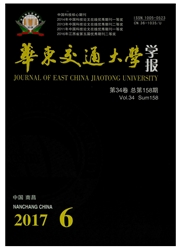

 中文摘要:
中文摘要:
传统的能耗优化方法通常利用CPU的DVFS协议以及射频通信休眠调度来减少耗能。却很少有工作在对系统任务负载的调度和运行模式分配的同时考虑计算/通信两个子系统对能耗的综合优化。此外,传统的能耗优化机制通常只考虑系统的总能耗最优,而忽略了系统中个别节点能源耗尽对网络连通性所产生的影响。提出一种以系统寿命最大化为目标的任务调度和工作模式分配机制。该机制根据任务的实时性约束条件和节点的剩余能量调度任务,通过控制DVFS协议给子任务设定工作频率,同时利用射频休眠调度来实现系统能耗和寿命的折中平衡。仿真实验的结果表明,任务调度与分配算法在无线嵌入式网络系统的能耗和寿命表现上优于传统的方法。
 英文摘要:
英文摘要:
Traditional energy efficient task scheduling and allocating scheme in wireless embedded network system normally focus on either the DVFS protocol at CPU which adjusts the frequency of CPU at runtime, or the sleep/awake mode of communication module which saves energy when there is no transmission. However, little work has been done to deal with the computing and communicating subsystem as a whole. Moreover, the traditio-nal schemes only aim at the system-level energy consumption, not even being aware that the system would cease work if the connectivity were broken as some nodes died with no energy. In this study, a system-life maximizing task scheduling and allocating algorithm is proposed, which controls the DVFS protocol at CPU and the sleep scheduling at the communication module as a whole, according to the remaining energy resource of each node. Meanwhile, the proposed scheme reaches the system real-time deadline constraint. Simulation results demonstrate that the proposed scheme offers better system performance.
 同期刊论文项目
同期刊论文项目
 同项目期刊论文
同项目期刊论文
 期刊信息
期刊信息
